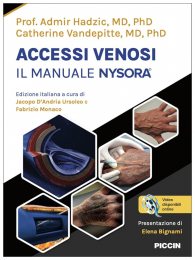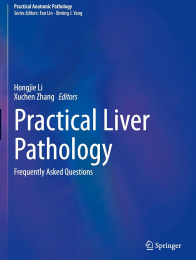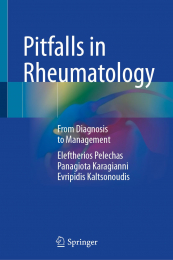Non ci sono recensioni
Features
- Now includes Hodgkin's Disease and the acute lymphoblastic leukemias - a 'one-stop-shop
- Improved consistency of style, structure and approach between chapters
- New text features - summary points, text boxes, reference annotation
- Improved coverage of the basic science aspects
Summary
This comprehensive and authoritative reference covers all aspects of the group of disorders collectively known as the lymphoid neoplasms. The reader is taken through a description of its normal cellular origins and the molecular genetic abnormalities that can lead to this group of conditions, a section of the book that has been considerably strengthened for this third edition, to the environmental factors that may be relevant to disease development, and, finally, to the pragmatic aspects of disease management. The authors synthesise for the reader apsects of current knowledge and likely future developments, and direct them to the appropriate resources should they wish to pursue particular avenues of scientific or literature research.
Table of Contents
Part I: INTRODUCTION
1. Introduction to the lymphoid neoplasms
2. Historical perspective: the evolution of modern concepts of lymphoid neoplasia
Part II: EPIDEMIOLOGY
3. Descriptive epidemiology
4. Causes and prevention of lymphoma
5. Immunologic and genetic predisposition
6. Epidemiology of exogenous human retroviruses associated with hematologic malignancies
7. Herpesviruses and lymphoma
8. Other microorganisms associated with lymphoid neoplasms
Part III: IMMUNOBIOLOGY
9. Overview of the immune system
10. Ontogeny of T and natural killer cells
11. Ontogeny of B cells
12. Cellular immunobiology of lymph nodes and spleen
13. Cellular immunobiology of extranodal lymphoid tissue
14. Biology of plasma cells
15. Interleukins and lymphoid neoplasia
16. Lymphocyte homing and the dissemination of lymphoid malignancies
17. Mouse models of human B lymphoid neoplasms
Part IV: CLASSIFICATION AND PATHOGENESIS
18. Classification of lymphoid neoplasms
19. Borderlands between pathological entities: composite lymphomas
20. Chromosomal and molecular alterations in lymphoid malignancies: basic principles and detection methods
21. Molecular basis of chromosomal translocations
22. Genesis and consequences of genetic lesions in lymphoma classification
23. Gene expression patterns in lymphoma classification
24. Immunodeficieny, inherited and acquired, and lymphomagenesis
25. Chronic inflammation, including autoimmunity, and lymphogenesis
Part V: PATHOLOGY AND PATHOGENESIS OF SPECIFIC LYMPHOMAS
26. Lymphoblastic lymphomas and leukemias
27. Chronic lymphoid leukemias and u heavy chain disease
28. Hairy cell leukemia
29. Mantle cell lymphoma
30. Marginal zone lymphomas
31. Follicular lymphoma
32. Burkitt lymphoma
33. Diffuse large B cell lymphomas
34. Hodgkin lymphoma
35. Plasma cell neoplasms
36. Natural killer (NK) cell neoplasms
37. Anaplastic large cell lymphoma
38. Mycosis fungoides and Sezary Syndrome: pathophysiology and pathology
39. Other peripheral T cell lymphomas: pathology and molecular pathogenesis
Part VI: PRESENTING FEATURES, DIAGNOSIS AND STAGING
40. Presenting features of lymphoid neoplasms
41. The art of histological diagnosis
42. Immunophenotyping as a diagnostic and prognostic tool
43. The utility of molecular genetic studies in the diagnosis, prognostic assessment and monitoring of lymphoid malignancies
44. Radiologic, ultrasound and magnetic resonance imaging
45. Radionuclide imaging
46. Staging systems and staging investigations at presentation
47. Special aspects of diagnosis in developing countries
48. Imaging lymphomas in developing countries
Part VII: GENERAL PRINCIPLES OF MANAGEMENT
49. Emergency management in lymphoid malignancies
50. Systemic therapy of lymphoma
51. Role of radiation therapy
52. Response assessment and follow-up of the patient with malignant lymphoma
53. Prognostic factors and risk adaptation
54. Second-line therapy for lymphoid neoplasms
55. High-dose therapy with stem cell rescue
56. Management of lymphoid neoplasia during pregnancy
57. Management of lymphoid malignancies in the infant
58. Management of lymphoid neoplasms in the elderly
59. Management of lymphomas at extranodal locations
60. Special aspects of management of lymphomas in developing countries
61. Late effects of cancer treatment and quality of life
Part VIII: MANAGEMENT OF SPECIFIC DISEASES
62. Lymphoblastic lymphoma and leukemia in children
63. Acute lymphoblastic leukemia and lymphoma in adults
64. Small B cell lymphomas and leukemias with hairy cell leukemia
65. Mantle cell lymphoma
66. Marginal zone lymphomas
67. Follicular lymphoma
68. Burkitt lymphoma/leukemia in children
69. Burkitt and Burkitt like lymphoma/leukemia in adults
70. Diffuse large B cell lymphoma in children
71. Diffuse large B cell lymphomas in adults
72. Hodgkin lymphoma in adults
73. Hodgkin lymphoma in children
74. Plasma cell neoplasms
75. The management of natural killer cell malignancies
76. Anaplastic large cell lymphoma in adults
77. Anaplastic large cell lymphoma in children
78. Mycosis fungoides and Sezary Syndrome
79. Adult T-cell leukemia/lymphoma
80. Other peripheral T cell lymphomas
81. HIV-associated lymphoid neoplasms
82. Lymphoid neoplasms in immunodeficiency, immunosuppression, and autoimmunity
83. Uncommon histologic subtypes of non-Hodgkin lymphoma in children
Part IX: FUTURE DIRECTIONS IN DIAGNOSIS AND TREATMENT
84. Molecular profiling and lymphoma diagnosis
85. New therapies for lymphoid neoplasms
86. Monoclonal antibody therapy for lymphomas and leukemias
87. Cellular therapies for lymphoma
88. Vaccine therapies
89. Lymphoma microenvironment
90. Molecular pathway therapy for non-Hodgkin lymphomas
91. Therapeutic strategies employing viral-associated targets





